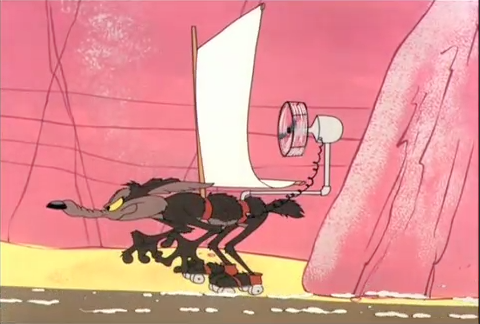
Readers of this blog may think I’m a cynical, frumpy coot because I’m frequently noting the negative aspects of approaches, programs, technologies, and evaluation. I feel obligated to do it because I’m a licensed professional engineer in half a dozen, or so, states. Professional engineers, like doctors, are sworn to go about their profession in the best interest for the general well-being, health, and welfare of the public and those they serve (e.g. clients). Well-being and welfare include not getting screwed over or caught by surprise – by revealing the whole story; the whole truth.
Recently, E Source published a paper concerning Black Box technologies. Now here is an interesting topic, but I will expand beyond technologies to programs and useless program evaluation methods.
Any technology must be explainable with underlying engineering fundamentals – first and second laws of thermodynamics. How critical are they? If an engineer cannot explain them a dozen different ways each, don’t bother applying for employment with Michaels Energy.
The first law involves conservation of energy. Energy is not created or destroyed. It may change form. Readers should have learned this in high school, possibly by some other name. I don’t remember.

The second law of thermodynamics says there is no magic. Water doesn’t flow uphill by itself. The beer doesn’t stay cold in the refrigerator without some means of moving heat from a cold body to a warm body – which is precisely what a refrigerator is. Things break down when left alone. The ocean wave will make a mess of a pristine sand castle. It will not make it more exquisite – zero percent chance. I learned the second law in grade school from Wile E. Coyote – cartoon physics.
Program implementers and utilities are always looking for the next black box. What other new and great second law reversers are out there to be exploited? The frumpy answer is always, none. Existing technologies and energy consuming devices simply need to be selected appropriately, laid out (designed) well to meet the needs of the application, and controlled properly. Yeah. It’s fundamental, not magic.
One black box presented to us a number of years ago was designed to reduce lighting power. It would be installed at the electrical panel and only worked for certain types of fixtures with certain types of ballasts. A ballast is, itself, a black box that (1) ignites a fluorescent lamp (as well as other types of lamps) and (2) maintains proper voltage to keep it lit without burning up the ends.
This black box did reduce power, but what it really did was reduced voltage and that led to lower light levels. No second law reverser. That was the catch and of course, not advertised.
There exist legitimate black box technologies that can only be tested on in situ because the physics and thermodynamics are too complex to model. One example I’ve encountered was/is oxygen lancing in a steel making process.
The steel mill I was involved with melted scrap, from sheet metal to railroad car wheels. It was like making a puree. The operator would select a mix of various scrap, like vegetables, to be melted in the steel furnace. Then trace elements, like seasonings for soup, are tossed in. One of these is metallurgical coal – carbon. Carbon is an important element of steel giving it the appropriate characteristics. It actually reacts chemically (this is over my head, by the way) with the other stuff in the soup, and chemical reactions generally include release of energy in the form of heat – just what is needed for melting steel. The oxygen lance enhances this process. Rather than simply melting steel by brute force with an electrode, the chemical agents can be used to do a lot of it with no substantial energy input. Cool! Calculate savings? No way. This can only be measured in kWh per ton, pre and post implementation.
The thing to ask as engineers is: How does it work? What are the impacts in terms of thermodynamics, fluid dynamics, heat transfer, input and output? Referring to the oxygen lance case above, that makes thermodynamic sense. I get it.
This brings me around to evaluation for things like continuous energy improvement and operations and maintenance programs (O&M). If a customer, or their consultant, cannot explain what was done to reduce energy consumption, it doesn’t exist, I don’t care what the energy bills look like. What are you doing to save energy?
This was the problem I had reviewing an evaluation paper for one such program. It was based entirely on billing regression. Hey evaluator – what are they doing to save energy? For all we know the Twinkies being manufactured fell out of favor because of the current gluten hyper-fad that is underway. What is happening with production? Are they producing more or less? It’s pretty easy to save energy when Twinkie production contracts.
Billing regression alone for a behavioral O&M program in a manufacturing facility is worthless, and I use that term very sparingly.
At minimum, concepts must be explainable with engineering fundamentals. In most cases, savings can be estimated with fundamentals and arithmetic.





